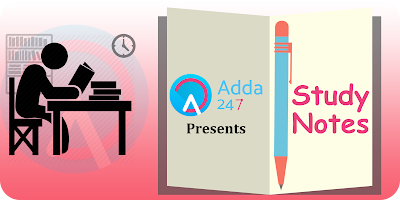With SBI PO, NIACL Assistant, BOB PO, Dena Bank PO, NICL AO and Bank of India, they all have a General Awareness section which is heavily filled with Banking Awareness Questions. Here we will discuss some terms related to Monetary Policy; it will help you prepare well for upcoming Banking or insurance Examinations.
Monetary policy refers to the policy of the central bank with regard to the use of monetary instruments under its control to achieve the goals specified in the Act. The Reserve Bank of India (RBI) is vested with the responsibility of conducting monetary policy. This responsibility is explicitly mandated under the Reserve Bank of India Act, 1934.
The primary objective of monetary policy is to maintain price stability while keeping in mind the objective of growth. Price stability is a necessary precondition to sustainable growth. In May 2016, the Reserve Bank of India (RBI) Act, 1934 was amended to provide a statutory basis for the implementation of the flexible inflation targeting framework. The amended RBI Act also provides for the inflation target to be set by the Government of India, in consultation with the Reserve Bank, once in every five years. Accordingly, the Central Government has notified in the Official Gazette 4 percent Consumer Price Index (CPI) inflation as the target for the period from August 5, 2016, to March 31, 2021, with the upper tolerance limit of 6 per cent and the lower tolerance limit of 2 per cent.
The Central Government notified the following as factors that constitute the failure to achieve the inflation target:
(a) The average inflation is more than the upper tolerance level of the inflation target for any three consecutive quarters; or
(b) The average inflation is less than the lower tolerance level for any three consecutive quarters.
Prior to the amendment in the RBI Act in May 2016, the flexible inflation targeting framework was governed by an Agreement on Monetary Policy Framework between the Government and the Reserve Bank of India of February 20, 2015.
There are several direct and indirect instruments that are used for implementing monetary policy.
Repo Rate: The (fixed) interest rate at which the Reserve Bank provides the short-term loan (overnight liquidity) to banks against the collateral of government and other approved securities under the liquidity adjustment facility (LAF).
Reverse Repo Rate: The (fixed) interest rate – currently 25 bps below the repo rate – at which the Reserve Bank absorbs liquidity, on an overnight basis, from banks against the collateral of eligible government securities under the LAF.
The LAF consists of overnight as well as term repo auctions. Progressively, the Reserve Bank has increased the proportion of liquidity injected under fine-tuning variable rate repo auctions of tenors ranging between overnight and 56 days. The aim of term repo is to help develop the inter-bank term money market, which in turn can set market-based benchmarks for pricing of loans and deposits, and hence improve transmission of monetary policy. The Reserve Bank also conducts variable interest rate reverse repo auctions, as necessitated by the market conditions.
Marginal Standing Facility (MSF): A facility under which scheduled commercial banks can borrow additional amount of overnight money from the Reserve Bank by dipping into their Statutory Liquidity Ratio (SLR) portfolio up to a limit [currently two per cent of their net demand and time liabilities deposits (NDTL)] at a penal rate of interest, currently 25 basis points above the repo rate. This provides a safety valve against unanticipated liquidity shocks to the banking system.
The MSF rate and reverse repo rate determine the corridor for the daily movement in the weighted average call money rate.
Bank Rate: It is the rate at which the Reserve Bank is ready to buy or rediscount bills of exchange or other commercial papers. The Bank Rate is published under Section 49 of the Reserve Bank of India Act, 1934. This rate has been aligned to the MSF rate and, therefore, changes automatically as and when the MSF rate changes alongside policy repo rate changes.
Cash Reserve Ratio (CRR): The average daily balance that a bank shall maintain with the Reserve Bank as a share of such per cent of its NDTL that the Reserve Bank may notify from time to time in the Gazette of India.
Statutory Liquidity Ratio (SLR): The share of NDTL that banks shall maintain in safe and liquid assets, such as unencumbered government securities, cash, and gold. Changes in SLR often influence the availability of resources in the banking system for lending to the private sector.
Open Market Operations (OMOs): These include both outright purchase and sale of government securities for injection and absorption of durable liquidity, respectively.
Market Stabilisation Scheme (MSS): This instrument for monetary management was introduced in 2004. Surplus liquidity of a more enduring nature arising from large capital inflows is absorbed through the sale of short-dated government securities and treasury bills. The cash so mobilized is held in a separate government account with the Reserve Bank.











 GA Capsule for SBI Clerk Mains 2025, Dow...
GA Capsule for SBI Clerk Mains 2025, Dow...
 The Hindu Review October 2022: Download ...
The Hindu Review October 2022: Download ...
 How to Manage Time for PNB SO Preparatio...
How to Manage Time for PNB SO Preparatio...





